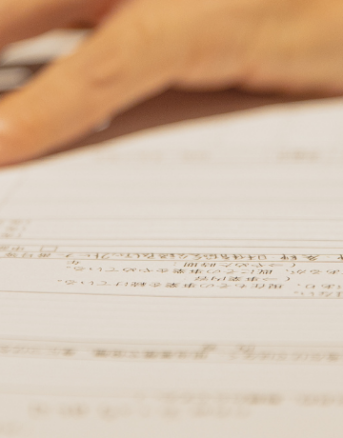Filing a tax return with incorrectly calculated tax liability won’t only delay your refund, but it may create additional debt.
If you make a math error on your tax return, the IRS will send you Notice CP11 to inform you that they’ve corrected it. The notice will also contain information about the new balance due and the deadline by which you have to settle the debt.
This notice doesn’t indicate anything wrong with your return or that the IRS intends to take further action once the debt is paid. It only shows the changes the IRS made to your return and explains how to respond to the notice and its purpose.
We’ll examine what IRS Notice CP11 is and explore some of the best ways to respond.
Table of Contents
The Purpose of IRS Notice CP11

The IRS sends letters to taxpayers whenever it requests additional information about a tax return, asks for a payment, or notifies them about adjustments made to a tax return.
The purpose of Notice CP11 is to inform a taxpayer about the changes made to the tax credit, deductions, or income amounts they’ve included on their returns. The notice also contains the amount a taxpayer must pay to the IRS due to these changes.
You’ll receive IRS Notice CP12 if the adjustments the IRS makes to your tax return increase your tax refund. The letter allows you to look at the changes and check if they accurately reflect the tax liability.
It also tells you what to do if you disagree with these adjustments, and it contains a payment coupon you can use to settle the additional debt if you agree with the changes.
Reasons The IRS Makes Changes on Tax Returns

It’s impossible to list all the reasons the IRS may adjust your tax return and send you Notice CP11. However, the letter you receive will always contain all the changes the IRS made to your return and an explanation for each adjustment.
In most cases, the IRS sends Notice CP11 to taxpayers who underreported their taxable income or claimed credits they’re not eligible for.
Also, providing an incorrect dependent’s SSN, miscalculating tax payments, choosing a wrong filing status, or claiming an incorrect deduction are some of the reasons you may get Notice CP11 from the IRS.
Failing to include the appropriate documentation with your return that corroborates your motivation to make a particular credit or deduction claim can be why the IRS corrects the return and sends you Notice CP11.
Interpreting an IRS Notice CP11
Your personal information will be in the upper right corner of Notice CP11’s first page. Sift through this information to ensure the IRS has sent the letter to the right recipient.
You’ll find the amount due and the list of changes the IRS made to your return on the same page. The billing summary will be located next to the amount you owe and will list your total tax liability, the amount you paid, and the penalties or interests accrued.
You should carefully review the amount due and billing summary information on Notice CP11 and compare it with the information on the tax return.
Use the notice to determine which sections of the return were changed and check if your calculations were correct. You can dispute Notice CP11 if you prove that the IRS’s changes to your return were inaccurate.
It’s important to note that math errors usually occur on paper tax returns because tax software doesn’t make calculation mistakes.
Preparing to Respond to an IRS Notice CP11

The amount due date is located at the bottom of the billing information section. The IRS will send you Notice CP11 weeks before the due date to give you sufficient time to review the changes and decide how to respond.
You should review your W2, 1040, or 1099 forms to confirm that the additional amount you owe to the IRS is accurate.
The amount also contains a failure-to-file penalty, while you’ll only have to pay interest if you don’t respond to Notice CP11 in time.
Hence, during this stage, you must determine:
- How much you owe to the IRS.
- The time you have to pay the debt.
- The penalties and interests you may have to pay.
This final step is essential because the IRS may agree to waive interests and penalties if you cannot meet your tax responsibilities due to financial hardship, the death of a family member, or a natural disaster.
Taking Action After Receiving IRS Notice CP11

You’ll have two options after you receive IRS Notice CP11 and review the changes made on your return. You can either acknowledge and pay the debt by the due date or dispute the adjustments.
Notice CP11 instructs you what to do if you agree or disagree with the changes.
Accepting Tax Return Changes
Paying the due balance is the only thing you have to do if you agree with the adjustments the IRS made to your return. Optionally, you can amend your copy of the tax return to reflect these changes, but you don’t have to send the amended copy to the IRS.
It’s vital to send a check to the IRS or pay the due balance on the Payments page of the IRS website before the deadline specified in Notice CP11 to avoid paying additional interest and penalties.
You can ask for more time to respond to this notice by sending a request to the address on Notice CP11. The IRS will approve your request if it determines that the reasons for delaying the payment deadline are justified.
The following options are available to you if you cannot afford the pay the entire sum:
- Apply for an individual payment plan online
- File an offer in compromise application
- Explore partial payment agreement options
- Apply for the currently not collectible status
- Ask for innocent spouse relief if you’re not responsible for your spouse’s tax debt
You can request penalty abatement if the reason you made a mistake is justifiable, but keep in mind that the IRS won’t remove the penalties unless you submit a formal request.
Getting the IRS to waive the interest accrued due to late payment is much more difficult, and in most cases, you’ll have to pay the interest together with the due balance.
Refusing Additional Tax Liability
The legal timeframe for disputing the IRS’s changes to your return is sixty days. The adjustments become irreversible afterward, so you can’t appeal Notice CP11, and your only option is to pay the due balance and then dispute the adjustments.
Calling the number on the Notice CP11 and speaking with an IRS agent about the changes on your return is the first step if you disagree with the additional tax liability assessed to your account.
You must explain why you believe the adjustments are incorrect and provide documents that support your claim.
It’s advisable to consult a tax professional who can evaluate the complexity of your tax situation and help you decide if rejecting the adjustments on your return is the best course of action.
The IRS needs thirty to sixty days to respond to your dispute and reverse the adjustments on your return if its agents determine your claims are credible.
Your return will be audited if you raise a dispute and fail to provide sufficient documents that support the information on the return. An auditor will contact you within six weeks and inform you about further steps.
Frequently Asked Questions
Claiming a stimulus payment you’re not eligible for on a tax return can be why you get Notice CP11 from the IRS. In the last few years, the IRS sent this notice to taxpayers who miscalculated their Recovery Rebate and Advance Child Tax credits.
The IRS doesn’t charge interest on the amount due specified on Notice CP11 if you settle the tax debt before the payment deadline.
Calling the IRS is the fastest way to correct the changes the IRS made to your return if, upon Notice CP11 review, you determine they’re inaccurate.
You can discuss the changes with an IRS agent over the phone, explain why you think they’re incorrect, and fax the documents that support your claim.
Besides a copy of Notice CP11, you should also include financial documents that justify reversing the changes on your return. You’ll have two months from the notice date to mail the required documents to the IRS.
Finding The Best Way to Respond to IRS Notice CP11
Taxpayers usually get Notice CP11 because of mistakes on their tax returns that create an additional tax debt. The IRS uses this notice to let taxpayers know that they’ve adjusted their returns and calculated their remaining tax liability.
You should review the notice as soon as you receive it and determine if the changes the IRS made to your return are correct. If you agree with the adjustments, you should pay the balance or set up a payment plan.
You’ll have two months from the date you get the notice to contact the IRS and prove that their changes to your return are inaccurate.
Author:
Logan is a practicing CPA and founder of Choice Tax Relief and of course Money Done Right. After spending nearly a decade in the corporate world helping big businesses save money, he launched his blog with the goal of helping everyday Americans earn, save, and invest more money. Learn more about Logan.







I have received a CP11 Notice and disagree with its determination. On CP11 it is noted I have the right to a higher standard deduction if my spouse and I are over 65, which we are. I have tried to speak to someone over the phone about this and find it impossible to do so. I have literally spent nearly 2 hours on the phone. Please Help.
I am in a similar situation. I don’t think their calculation is correct and I want to know how they got their conclusion. I call the number on the CP11 and they keep transferring me around and no one can tell me what to do. Did you ever find a way to resolve yours?